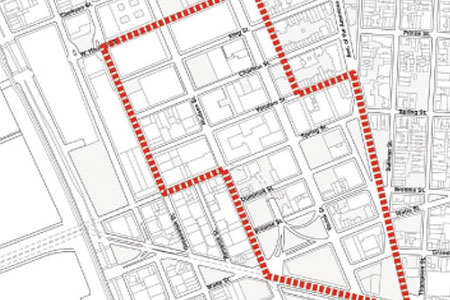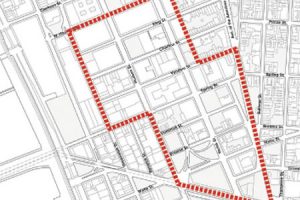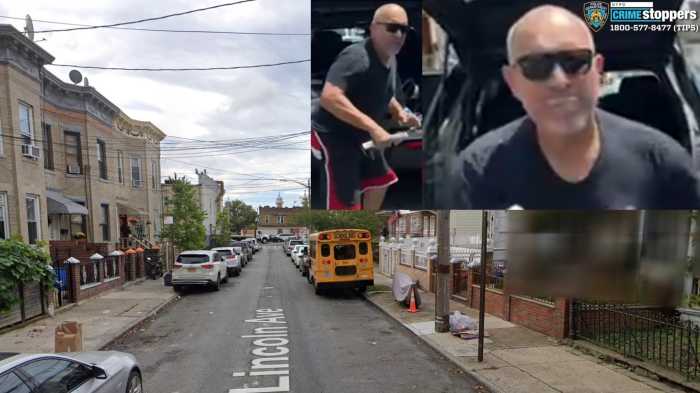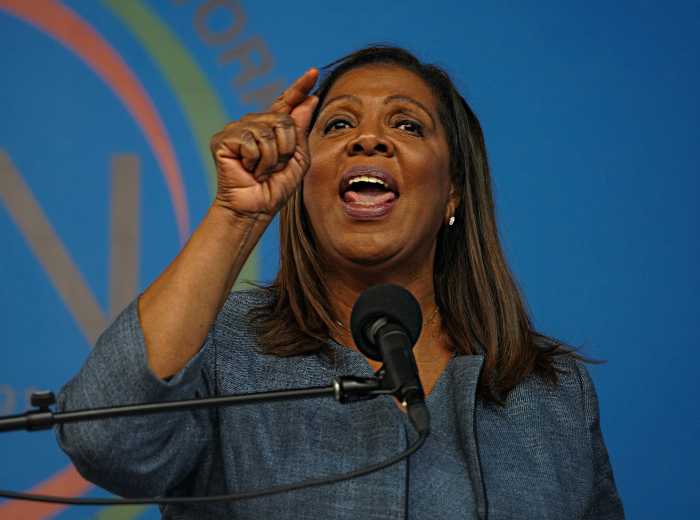BY ALBERT AMATEAU | Residents of Hudson Square’s low-rise blocks voiced their concerns on Tuesday on a proposed 20-block district that would encourage a mixed commercial/residential district active 24 hours, seven days a week.
The proposed new development rules for the current Lower West Side manufacturing district between Canal and Houston Sts., would impose height limits where none now exist, impose rules for new and converted residential uses and allow a new high-rise residential building in Duarte Square at Canal St. at Sixth Ave. with a 420-seat public elementary school on its lower floors.
Although the rezoning, proposed last year by Trinity Real Estate — which owns 40 percent of the property in the district — would impose height limits, residents of Charlton and Vandam Sts. said at the Tues., March 27, forum that the limits were too high.
Height limits for new development would be 320 feet on the wide streets of Varick and Hudson Sts. and Sixth Ave.; 125 feet on Broome and Watts Sts.; and 185 feet on Dominick, Spring, Vandam, Charlton and King Sts. The proposed height limits are intended to achieve the goal of transforming the district, currently dominated by warehouses and commercial lofts, to 75 percent residential.
But Sylvia Beam of the Vandam St. Block Association and Dick Blodgett of the Charlton St. Block Association, said the proposed 320-foot and 185-foot limits were not low enough to ensure the quality of life in the low-rise blocks.
Tobi Bergman, a Community Board 2 member who lives in the proposed Hudson Square zoning district, agreed.
“So far, there has been no explanation for a 320-foot height limit,” Bergman said. “You don’t need 300-foot-tall buildings to achieve a 9 or 10 F.A.R. [Floor Area Ratio],” he added. F.A.R. refers to the ratio of allowable developable square feet in relation to the property’s footprint. The board will be focusing on the lack of open space as well as height limits.
The Department of City Planning has yet to officially certify plans for the proposed district, starting the six-to-nine-month-long uniform land use review procedure (ULURP).
Increased traffic resulting from new residential development was another major concern at the Tuesday forum. More traffic to the area where the entrance to the Holland Tunnel already brings bumper-to-bumper auto traffic on Varick St. would overwhelm the district, residents said.
“I can’t imagine building a school at Duarte Square triangle with all that traffic,” said one resident.
However, Carl Weisbrod, real estate consultant for Trinity, said the school entrance and exit would be on the Grand St. side of the triangle to separate it from the heavy traffic of Sixth Ave.
Weisbrod said that Trinity would bear the cost of building out the shell and core of the school and turn it over to the School Construction Authority and the Department of Education to install classroom, program and office furnishings and run it as a public school.
“We want to make sure there will be a school for the new families in the district, and we hope it will relieve the school overcrowding in adjacent areas,” Weisbrod said.
Responding to one resident who complained that Trinity has not leased space to shops and services that the neighborhood needs, Weisbrod said the area has not had enough residents to attract retailers.
“There’s going to be development anyway. We’re trying to create a balance,” he added.
Another resident praised Trinity for its role in bringing the Children’s Museum to Charlton St.
“We have families with children walking on the block now,” he said.
Nevertheless, a few residents said they would miss the relatively quiet atmosphere of the past.
Indeed, the quiet atmosphere has been changing in the past few years, especially with the completion in 2010 of the 450-foot-tall Trump Soho condo hotel at Varick and Spring Sts., which preservation and neighborhood activists opposed in vain.
The rezoning is intended to prevent more extra-large hotels like Trump Soho in the district. In addition to height limits, the proposed district would allow new hotels with more than 100 rooms only by special permit.
Andrew Berman, executive director of the Greenwich Village Society for Historic Preservation, a co-sponsor of the Tuesday meeting, was concerned that a new mixed-use, 24/7 Hudson Square district would focus development pressure on part of the proposed South Village Historic District on the east side of Sixth Ave. across from Hudson Square.
“Would Trinity join us in supporting landmark designation for the South Village?” he asked. Weisbrod replied that he would raise the issue with Trinity Real Estate.
In addition to G.V.S.H.P., sponsors of the Tuesday forum included the Vandam St. and Charlton St. block associations, Soho Alliance, Greenwich Village Community Task Force and Greenwich Village Block Associations.






































